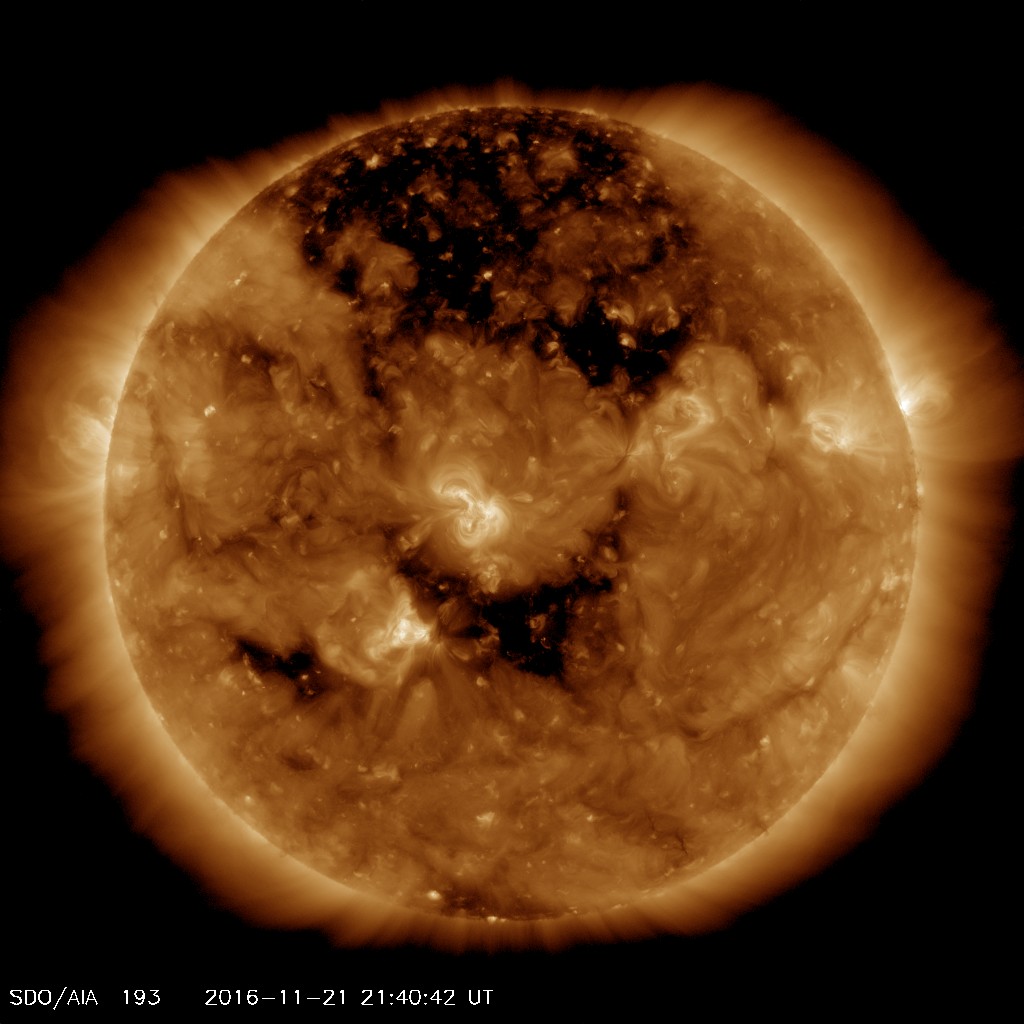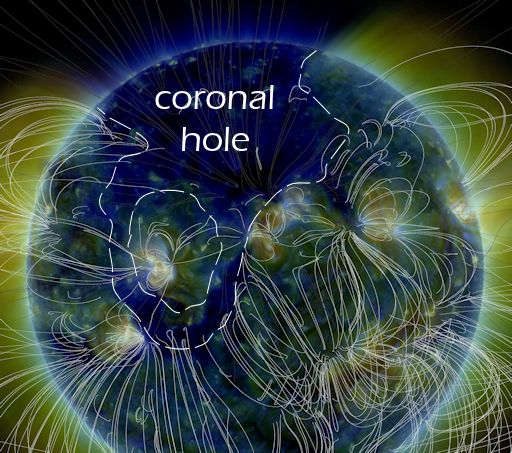LK 21:25 Signs in the Sun: The return of the big Coronal Hole
Videos included...
Last week, NASA's STEREO-A spacecraft captured an image showing a white sphere covering a small part of the sun. The photo went viral over the weekend, with some media outlets breathlessly describing the feature as a UFO or a "mystery sphere."
But there's no mystery, scientists explained.
"Just combination of 2 @NASA STEREO images (1 of sun, 1 of space) caused by computer error. Happens sometimes," C. Alex Young, a heliophysicist at NASA's Goddard Space Flight Center in Greenbelt, Maryland, said today (Nov. 21) via Twitter, where he posts information about the sun and space weather using the handle @TheSunToday.
There is an actual hole in the sun at the moment, but it doesn't look anything like the white dot in the image taken by STEREO-A (whose name is short for Solar Terrestrial Relations Observatory). Rather, it's a gigantic, dark feature called a "coronal hole" — a relatively cool region where the sun's magnetic field lies open to interplanetary space, allowing the flow of charged particles known as the solar wind to stream forth.


NASA's Solar Dynamics Observatory spacecraft captured this image of the sun's huge, dark coronal hole on Nov. 21, 2016.
Credit: NASA/SDO
Indeed, dramatic Arctic auroras occurred late last month when this same coronal hole — which scientists have been tracking with NASA's Solar Dynamics Observatory spacecraft — was facing Earth. And a similar display could begin tomorrow night (Nov. 22), because the hole has rotated around toward this planet again.
"Since our last encounter with this hole, in late October, it has been transiting the far side of the sun, carried around by the sun's 27-day rotation," Spaceweather.com reported today. "Now that it is back, we can see that the hole is not quite as large as it was a month ago — but it is still impressive, covering more than one-fourth of the visible solar disk."
It would hard for the conspiracy theorists to argue that this hole is an alien spaceship — the sun is more than 860,000 miles (1.4 million kilometers) wide, after all…
The return of the big Coronal Hole: A new front of arctic auroras ahead?
The big Coronal Hole on the sun is back again.
And could spark strong geomagnetic storms and Arctic auroras as it is turning toward Earth again.

What are coronal holes?
Coronal holes are regions in the sun’s atmosphere where the magnetic field peels back and allows solar wind to escape. Since our last encounter with this giant hole in late October it has been transiting the farside of the sun. Now that it is back we can see that the hole is not quite as large as it was a month ago. But it is still impressive, covering more than 1/4th of the visible solar disk.NOAA forecasters expect the leading edge of the emerging solar wind stream to reach Earth late on Nov. 22nd. G1-class geomagnetic storms are expected on Nov. 23rd. Keep your eyes to the sky.
